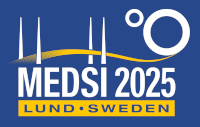Speaker
Description
Korea-4GSR, which is currently being developed in Korea, aims to provide high performance photon beams. In this work, I present the design and thermodynamic simulation of the photon absorption system to be installed in Korea-4GSR. In synchrotron accelerators, managing the intense photon flux generated by bending magnets and insertion devices is very important for maintaining the accelerator's performance. The emitted synchrotron radiation, characterized by its high intensity and broad spectrum, imposes significant thermal and structural demands on accelerator components. Photon absorbers are essential to effectively block excess photons, ensuring stable operation and extending the lifespan of the vacuum components. The storage ring of Korea-4GSR consists of a total of 28 cells. Each cell is planned to be equipped with 5 photon absorbers and 3 photon masks. The synchrotron radiation power per cell is 15.68[kW], of which the photon absorbers and photon masks absorb 11.51[kW], while the vacuum chamber absorbs 3.11[kW]. In the first phase, 9 ID beamlines and one bending magnet beamline are planned to be installed. The crotch absorber has been designed based on the EPU98, which has the largest beam divergence angle and intensity. Extensive research has been conducted to ensure accurate and efficient thermal analysis. Thermal and structural simulations with ANSYS workbench in the worst-case scenario are performed to validate the integrity of the absorber within the acceptable material stress limit. Furthermore, vacuum compatibility is carefully integrated to support long-term operation within the UHV environment.

